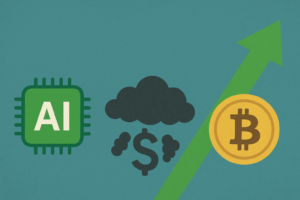Each tap, click, and action in the online world adds to our increasingly vast digital trail. It is a text message dispatched from an application, an e-commerce purchase transacted online, or a CRM lead recorded by a company – personal information has grown into an engaged and entrenched component of our online personas. The explosion of data that drives innovation and imbues power to AI also creates privacy and security concerns.
In spite of the intricacy and magnitude of the data terrain, AI has emerged as an ever-changing instrument in contemporary cybersecurity. With its capacity to scan vast volumes of data at the click of a button and detect patterns in real time, it outclasses conventional defense mechanisms.
The solution is in the same power driving digital change—artificial intelligence. While data is what AI works on, it is also turning out to be one of the best defenders of individual privacy.
Tracking Your Personal Data: From Capture to Vulnerability
The Journey
Each time a web service is accessed, personal data embarks on a journey through several stages:
- Collection: It is collected from touchpoints like cookies on websites, mobile apps, messaging API, form submissions, and sensors. That could be personal information (PII) such as names, email, geography, web browsing history, and biometrics.
- Storage: It is stored in various environments—from cloud-based systems and data lakes to on-premises servers—based on an organization’s infrastructure strategy.
- Processing: It is processed for use in activities from customer care and personalization to trend analysis and training of AI models.
- Sharing: It may be shared with third-party contractors under contractual protections, but unauthorized exploitation, accidental loss, or misuse risks are always present.
The Risks Involved
Regardless of the use of strong security best practices, personal data remains susceptible to a chain of threats. Cyberattacks like phishing, ransomware, and zero-day attacks are constantly getting advanced, looking for exploits in the system to steal or disrupt the secret information. Insider threats, by malicious intent or negligence, are also a danger to data integrity. Misconfigurations and human error also pose the threat of unintended revelation of secret information, the most prevalent of which is leaking sensitive information by accident. Besides the immediate security threat, the organizations further face grave reputational damage and substantial regulatory fines under harsh data protection regulations such as GDPR and CCPA, rendering end-to-end data security a critical necessity.
Protecting Your Digital Footprint with AI
In spite of the intricacy and magnitude of the data terrain, AI has emerged as an ever-changing instrument in contemporary cybersecurity. With its capacity to scan vast volumes of data at the click of a button and detect patterns in real time, it outclasses conventional defense mechanisms.
1. Automated Security Controls and Compliance Policies
AI facilitates real-time response to threats by partitioning threats, shutting down attackers, and triggering containment within a second, and it provides automatic compliance enforcement to eliminate human intervention and ensure international data privacy law compliance.
2. AI Anomaly and Threat Detection
AI improves threat detection through monitoring of user behavior for tracking anomalies and real-time monitoring of systems to immediately detect malware, phishing, or DDoS attacks, allowing for rapid, proactive action.
3. Intelligent Access Management and Adaptive Authentication
AI drives access management with adaptive authentication that dynamically adjusts login conditions on the basis of behavior and risk and supports biometric security such as voice or facial recognition for secure and frictionless user authentication.
4. Threat Prediction: AI-Based Risk Prediction
AI increases security through learning previous attack behaviors to predict vulnerabilities and classifying threats according to their severity so that security staff can properly focus on high-priority issues without being bogged down by low-priority messages.
5. Privacy-Enhancing Technologies (PETs)
Privacy-enhancing technologies powered by AI safeguard information by anonymizing or concealing personal identifiers, introducing statistical noise to preserve privacy in analysis, and facilitating encrypted data processing using homomorphic encryption without revealing individual identities.
Shaping Tomorrow’s Security Landscape with AI
Keeping one’s personal information safe is no longer a matter of firewalls and passwords, but it should be a clever, adaptive, and predictive strategy. Only AI can overcome this challenge, rewriting the cybersecurity playbook as a proactive instead of a reactive discipline.
Organizations need to embrace a multilayer security model where AI plays the role of both sentry and strategist to discover threats, manage access, and preserve privacy across all points of contact for data. That means
Robust access controls and ongoing audit trails
Adherence to international privacy legislation through AI-facilitated consent, retention, and access management.
As technology increasingly weaves its way into our cyberspace lives, protecting personal data isn’t merely a technical imperative—it’s an issue of trust. AI, which was once the recognized data-hungry beast, is also its most zealous protector.
By incorporating AI into the very fabric of cybersecurity itself, organizations can safeguard not only data but the confidence of everyone they serve. Data protection in the future is not just encrypted—it’s smart, adaptive, and fanatically secure.

Guest author Imteyaz Ansari is the Founder of Azmarq Technoavtion Pvt. Ltd. an organization whose flagship solutions cater to SMS Engagement, RCS Engagement, and Whatsapp Business. Any opinions expressed in this article are strictly those of the author.











